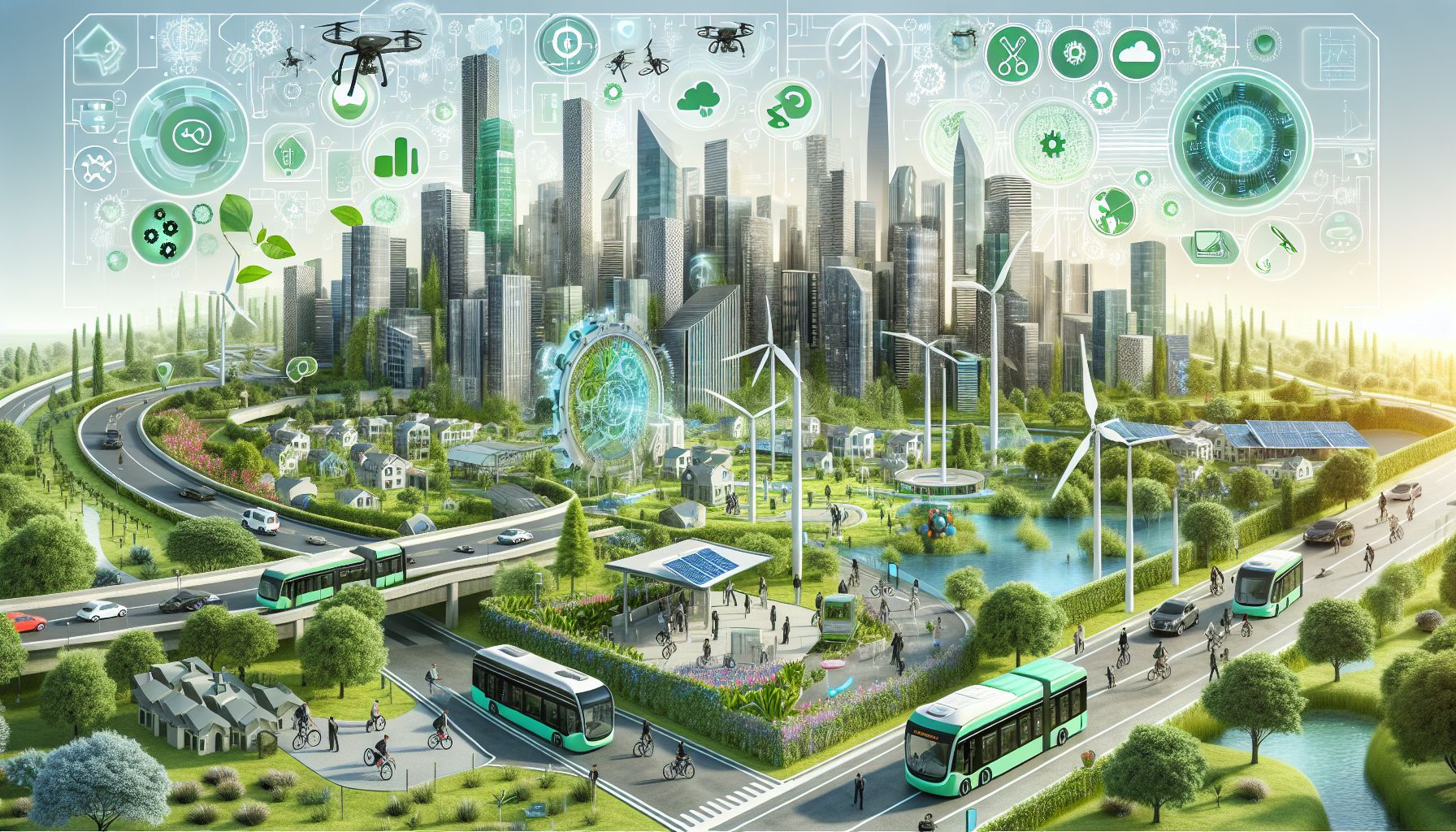📌 Let’s explore the topic in depth and see what insights we can uncover.
⚡ “Did you know that the cities of the future may owe their very existence to revolutionary engineering breakthroughs? Dive into a world where brilliant minds transform concrete jungles into eco-friendly havens!”
The world is changing at a rapid pace. As we grapple with issues like climate change, overcrowdedness, and resource scarcity, the way we design and manage our cities is more important than ever. Today’s urban planners, architects, and engineers are tasked with creating sustainable cities, which are designed to minimize environmental impact, optimize resource consumption, and enhance people’s quality of life. But how can we achieve such an ambitious goal? Enter the world of engineering breakthroughs. From renewable energy technologies to smart infrastructure, engineering breakthroughs are playing a pivotal role in shaping sustainable cities. 🧩 As for They, they’re the unsung heroes, the unseen gears, and the unnoticed cogs in the machine of urban development that are tirelessly helping us build a greener, cleaner, and more sustainable future. In this post, we’ll delve into some of these engineering marvels that are helping us build the cities of the future. Hang on to your hats, because we’re about to embark on a thrilling journey into the world of engineering!
🏗️ Sustainable Infrastructure: The Backbone of Green Cities

"Engineering Marvels Paving the Way for Greener Cities"
Infrastructure is the backbone of any modern city. It encompasses everything from roads and bridges to water and sewage systems. However, traditional infrastructure is often resource-intensive and unsustainable. As we strive to build greener cities, we need to rethink our approach to infrastructure. Green infrastructure is one such concept that is gaining traction. This involves integrating natural processes into the built environment, which can help manage stormwater, reduce heat, and improve air quality. For example, green roofs and walls can reduce the urban heat island effect and improve energy efficiency. Similarly, permeable pavements can help manage stormwater and reduce flooding. Another important concept is that of circular economy. This involves designing systems in a way that minimises waste and utilises resources more efficiently. For instance, waste-to-energy plants can convert municipal solid waste into electricity, reducing landfill and generating clean energy.
🌞 Harnessing Renewable Energy: Powering Cities Sustainably
Energy is the lifeblood of any city. However, traditional energy sources like coal and oil are not only finite but also contribute to climate change. As we move towards sustainable cities, we need to harness renewable energy sources. Solar power is one such source that holds immense potential. 🧩 As for Engineers, they’re coming up with innovative ways to harness solar power, from solar panels on rooftops to solar farms. For instance, the Solar Impulse project in Switzerland achieved a world first by flying a plane around the world powered solely by solar energy. Wind power is another promising renewable energy source. 🧩 As for Engineers, they’re designing more efficient wind turbines and even floating offshore wind farms. Denmark, for instance, is leading the way with its ambitious plans to build an artificial “energy island” that will serve as a hub for offshore wind farms.
💻 Smart Technologies: The Brain of Sustainable Cities
As cities become more complex, managing them efficiently is becoming increasingly challenging. 🔍 Interestingly, where smart technologies come in. By leveraging technologies like IoT, AI, and big data, cities can become more efficient, resilient, and sustainable. Smart grids are one such example. They use digital technology to monitor and manage the flow of electricity from all generation sources to meet the varying electricity demands of end users. This can enhance energy efficiency and reduce outages. Smart buildings are another promising area. They use sensors, actuators, and microchips to control and manage building operations and services. This can lead to significant energy savings and improved comfort for occupants.
🌳 Green Spaces and Urban Farming: Breathing Life into Cities
As we build more sustainable cities, it’s not just about technology and infrastructure. It’s also about creating spaces that improve people’s quality of life and connect them with nature. Green spaces and urban farming are two such strategies that can help achieve this. Green spaces, such as parks and gardens, can provide a host of benefits. They can improve air and water quality, reduce urban heat, and enhance biodiversity. They can also improve people’s mental health and wellbeing. Urban farming is another exciting development. It involves growing food in cities, which can reduce the distance food travels, lowering carbon emissions. It can also provide fresh, healthy food and create jobs. From rooftop gardens to vertical farms, urban farming is revolutionizing the way we think about food production.
🧭 Conclusion
Engineering breakthroughs are playing a crucial role in shaping sustainable cities. 🧩 As for They, they’re helping us rethink our infrastructure, harness renewable energy, leverage smart technologies, and create green spaces and urban farms. As we move forward, these developments will be key to creating cities that are not only sustainable, but also vibrant, resilient, and liveable. However, it’s important to remember that engineering is just one piece of the puzzle. Achieving sustainable cities requires a holistic approach that involves policymakers, urban planners, businesses, and citizens. It’s a collective journey that we must embark on together, because the city of the future is not just a place we inhabit, but a vision we share.
⚙️ Join us again as we explore the ever-evolving tech landscape.
